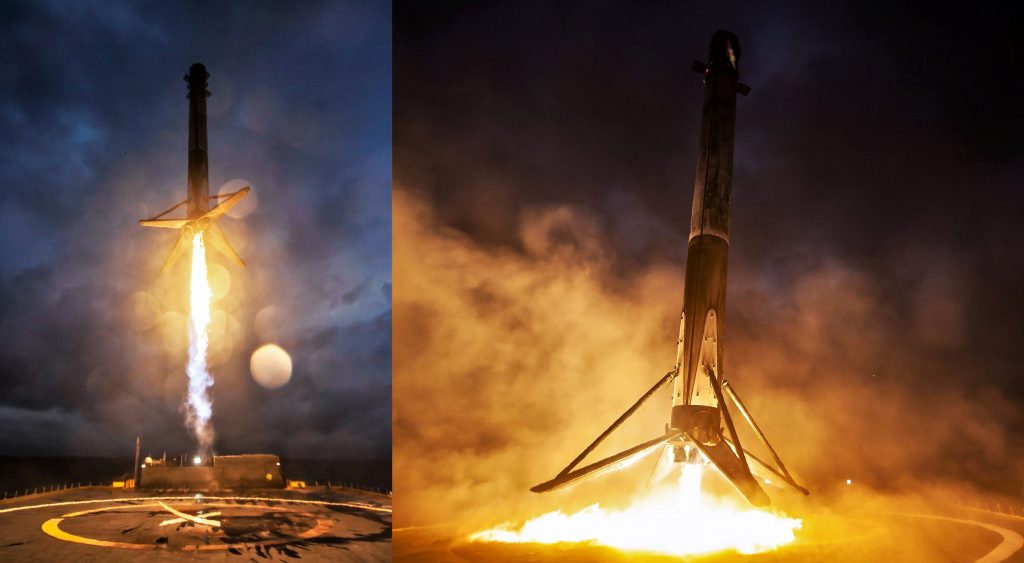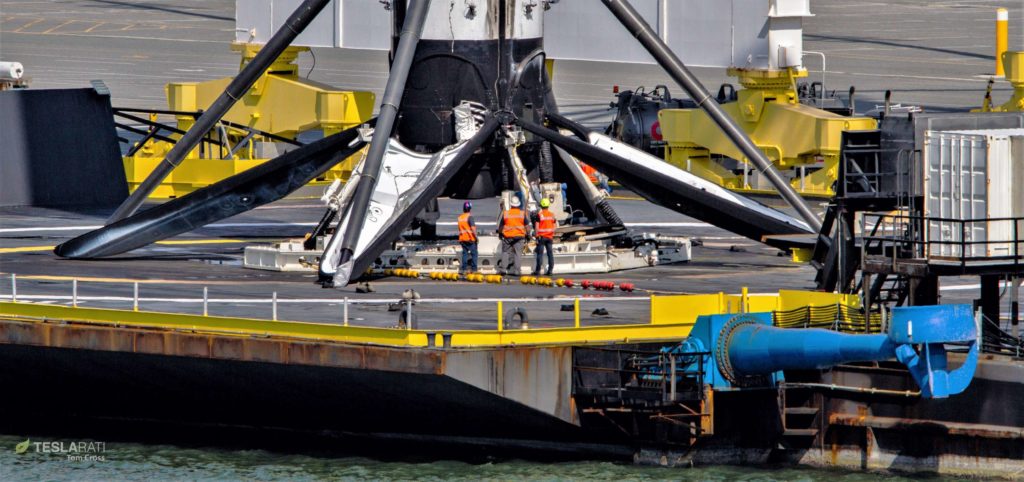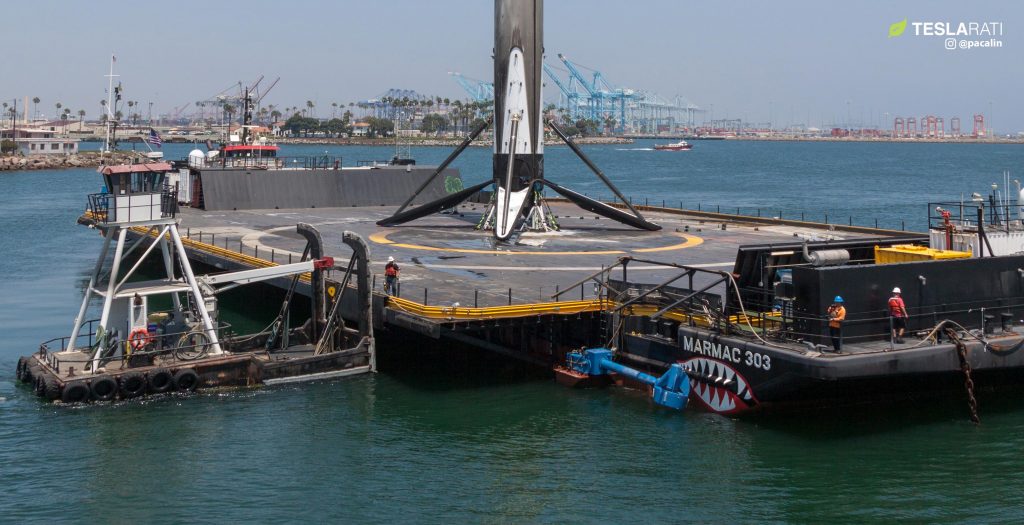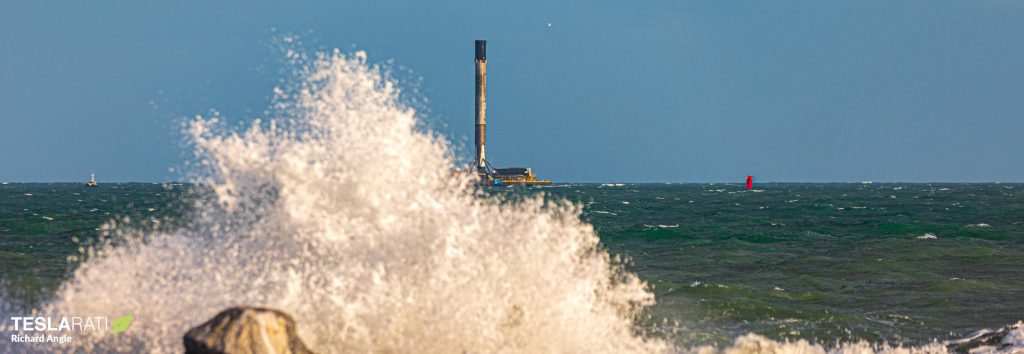SpaceX has kicked off a series of major upgrades planned for its East Coast fleet of drone ships, centered around Just Read The Instructions (JRTI) and most recently culminating in the apparent fabrication of a second tank-like rocket recovery robot.
Back in Q4 2019, West Coast drone ship JRTI officially departed the Port of Los Angeles berth it operated out of for 3+ years — traversing the Panama Canal, making a weeks-long pit-stop in a Louisiana port, and ultimately arriving at Port Canaveral on December 11th. The modified barge spent more than a month relatively untouched – as was the somewhat mysterious cargo it had brought with it from the Gulf Coast – before SpaceX began JRTI’s long-awaited upgrades around a month ago.
For almost half a year, it’s looked like that SpaceX would move its West Coast drone ship to Florida after the company’s Vandenberg Air Force Base (VAFB) pad entered a major lull in launch activities in early 2019. Aside from one launch in June 2019, SpaceX’s West Coast pad has remained unused and that isn’t expected to change anytime soon. With Cape Canaveral potential reopening its dormant polar launch corridor just weeks from now, it’s entirely possible that SpaceX will be able to perform all of its planned launches from Florida alone for at least the next 6-12 months. Targeting more than 30 East Coast launches in 2020 alone, SpaceX could also benefit from at least one additional drone ship to continue high-volume Falcon booster recoveries without ship availability becoming a major launch constraint. Thankfully, JRTI may be the perfect solution.
Informally known as ‘Octagrabber’, a reference to the robot’s primary function, SpaceX has been using the only operational instance of the vehicle on drone ship Of Course I Still Love You (OCISLY) for more than two years, beginning in 2017. While far from autonomous, Octagrabber helps SpaceX’s maritime rocket recovery team minimize the risks workers are subjected to and gives the company a bit more flexibility to attempt Falcon booster landings in less-than-pristine ocean weather.
While Falcon boosters are relatively stable once landed, thanks to the vast majority of their empty mass being concentrated around their nine Merlin 1D engines, even moderate waves can cause them to slip and slide around the drone ship deck.


In fact, the best operational demonstration of the value of Octagrabber-style recovery robots came after SpaceX’s historic Falcon Heavy triple-booster recovery in April 2019 – the first time all three of the rocket’s first stage boosters successfully landed after liftoff. As it turns out, thanks to moderate hardware differences between Falcon Heavy center core boosters and normal Falcon 9 boosters, OCISLY’s Octagrabber robot did not have the attachment mechanisms needed to ‘grab’ the center core (B1055, in this case). In theory, this could be a non-issue but the drone ship unfortunately ran into high seas, making its deck to pitch and tilt and ultimately causing to B1055 to tip over, breaking in half and effectively destroyed the booster.
With Octagrabber robots, drone ships should almost never lose recovered boosters because of high seas (within reason). As such, it should come as no surprise at all that SpaceX is building a new recovery robot for drone ship JRTI – the newest addition to its Florida fleet.

Aside from the discovery of a second Octagrabber being built at SpaceX’s former East Coast Starship factory, the nature of other upgrades planned for drone ship JRTI are more mysterious. For several months, the rocket landing platform has had almost a dozen massive generators and new thruster pods stored on its deck, seemingly waiting on an unknown impetus for their installation. In recent weeks, visible work to prepare the new hardware for installation has begun.
Notably, the thrusters and power supplies that seem destined for installation on JRTI would make for a dramatic upgrade, potentially giving the drone ship more power than the tug boats that must currently tender and tow them to landing zones. In other words, that’s a complicated way of saying that SpaceX may be trying to make drone ship JRTI almost entirely independent of contracted tugboats, potentially simplifying and lowering the cost of booster recoveries.

While less likely, it’s also possible that SpaceX is finally in a position to fully realize the “autonomous” namesake of its autonomous spaceport drone ships (ASDS), with high-powered thrusters potentially giving JRTI the ability to leave port, cruise to Atlantic Ocean landing zones, deploy an Octagrabber, and return to port with a booster – all without humans in the loop. That capability is likely still on the horizon but powerful thrusters and generators would bring port-to-port drone ship autonomy within SpaceX’s grasp in the near future.
Check out Teslarati’s newsletters for prompt updates, on-the-ground perspectives, and unique glimpses of SpaceX’s rocket launch and recovery processes.

(adsbygoogle = window.adsbygoogle || []).push({});
<!–
–>
var disqus_shortname = «teslarati»;
var disqus_title = «SpaceX eyes major drone ship fleet upgrades and a new rocket recovery robot»;
var disqus_url = «https://www.teslarati.com/spacex-new-rocket-recovery-robot-drone-ship-upgrades/»;
var disqus_identifier = «teslarati-131764»;

